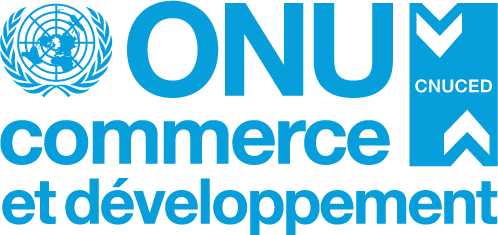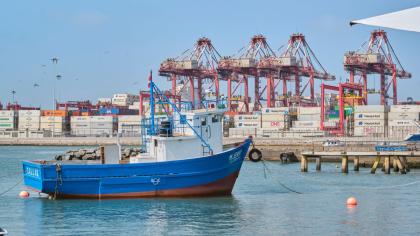
Negotiated within UNCTAD’s framework, the Global System of Trade Preferences (GSTP) among Developing Countries, signed on 13 April 1988, aims at increasing South-South trade primarily through preferential tariff reductions.
This agreement currently encompasses 42 member countries – seven of them least developed countries – and the Southern Common Market, known as Mercosur.
GSTP economies in 2021 represented a market of more than $16 trillion and generated some $4.4 trillion in import demand for goods – almost 20% of global merchandise imports.
Institutionally, the Committee of Participants - GSTP’s highest decision-making organ - oversees the implementation of the agreement, with substantive and technical support from UNCTAD.
- About GSTP
The first efforts to implement a plurilateral preferential trading system encompassing developing countries started in the mid-1960s.
Following the establishment of the General Agreement on Tariffs and Trade (GATT) Committee of Trade and Development in 1965, the Group on Expansion of Trade among Developing Countries was created to analyze South-South trade.
In 1971, a Protocol on Trade Negotiations among Developing Countries (PTN) was agreed by 16 nations (Brazil, Chile, Egypt, Greece, India, Israel, Mexico, the Philippines, Republic of Korea, Pakistan, Peru, Spain, Tunisia, Türkiye, Uruguay, Yugoslavia).
The Protocol, which entered into force in 1973, stated that “the establishment of preferences among developing countries, appropriately administered and subject to the necessary safeguards, could make an important contribution to the trade among developing countries, and that such arrangements should be looked at in a constructive and forward-looking spirit.”
It covered 740 tariff positions, one third of them related to agricultural products and raw materials.
In 1976, during the Mexico City Conference on Economic Cooperation among Developing Countries, the Group of 77 (G77) compiled a detailed programme, which provided a conceptual basis for the GSTP and went on to be endorsed during G77’s Fourth Ministerial Meeting in Arusha, Tanzania, in 1979.
The programme underscored the need to “review all tariff and non-tariff problems relating to development of trade among developing countries” and “establish a system of trade preferences among developing countries at the subregional, regional, and interregional levels. Such a system should not allow the extension to developed countries of preferences granted to developing countries.”
In 1982, G77’s foreign ministers met in New York to establish GSTP’s main components and a framework for negotiations. Preparatory work began in 1984, followed by progress at the New Delhi Ministerial Meeting in 1985.
The 1986 Ministerial Meeting in Brasilia established the GSTP as a provisional legal framework.
Two years later, talks on the text of the agreement completed in Belgrade, Yugoslavia, along with the first round of tariff reduction negotiations.
When the GSTP entered into effect in April 1989, tariff concession covered more than 1,800 items. The number later fell under 1,000 after the dissolution of Yugoslavia, and the withdrawal of Romania.
A second round of negotiations opened in Tehran in 1992 and concluded six years later.
A third round of negotiations, also known as the São Paulo Round, was launched during UNCTAD’s eleventh session (UNCTAD XI) in Brazil.
Under the authority of the GSTP negotiating committee, 22 participants (Argentina, Algeria, Brazil, Chile, Cuba, the Democratic People’s Republic of Korea, Egypt, India, Indonesia, Iran, Malaysia, Mexico, Morocco, Nigeria, Pakistan, Paraguay, Republic of Korea, Sri Lanka, Thailand, Uruguay, Vietnam and Zimbabwe) took part into the negotiations with the aim of broadening and deepening tariff concessions.
In 2009, ministers approved the modalities for exchanging tariff concessions, which included, “(a) an across-the-board, line-by-line, linear cut of at least 20 per cent on at least 70 per cent of their dutiable tariff lines; or (b) in the case of Participants with duty-free tariff lines accounting for more than 50 per cent of their total national tariff lines an across-the-board, line-by-line, linear cut of at least 20 per cent on at least 60 per cent of their dutiable tariff lines; and (c) the proposed schedule of tariff concessions shall be presented in the same format as the schedules annexed to this protocol.”
After six years of negotiations, the third round of negotiations concluded in December 2010 in Brazil, culminating in the adoption of the São Paulo Round Protocol. The Protocol was adopted by 8 participants (counting Mercosur as one): Cuba, Egypt, the Republic of Korea, India, Indonesia, Malaysia, Mercosur (thus Argentina, Brazil, Paraguay and Uruguay) and Morocco.
- Participants (members)
Algeria, Argentina, Bangladesh, Benin, Bolivia, Brazil, Cameroon, Chile, Cuba, the Democratic People’s Republic of Korea, Ecuador, Egypt, Ghana, Guinea, Guyana, India, Indonesia, the Islamic Republic of Iran, Iraq, Libya, Malaysia, Mexico, Morocco, Mozambique, Myanmar, Nicaragua, Nigeria, Pakistan, Paraguay, Peru, Philippines, Republic of Korea, Singapore, Sri Lanka, Sudan, Thailand, Trinidad and Tobago, Tunisia, the United Republic of Tanzania, Uruguay, Venezuela, Viet Nam, Zimbabwe and Mercosur.
Former members: Yugoslavia (from 1989-04-19 until dissolution), Romania (from 19-04-1989 until its EU membership), Colombia (from 19-04-1989 until 2017).
- Implementation
The São Paulo Round Protocol will enter into force with the ratification of at least four countries.
So far, Argentina (2018), Brazil (2022), Cuba (2013), India (2010), Malaysia (2011) and Uruguay (2017) have ratified the agreement. However, as Mercosur is considered only one entity, ratification by all four members of Mercosur is required for the Protocol to be considered ratified by Mercosur as a group. Currently pending one more ratification, the São Paulo Round results are yet to be implemented.
- South-South Trade and GSTP
South-South trade has hugely untapped potential for developing countries. South-South trade has grown from $600 billion in 1995 to $5.3 trillion in 2021, and its volume is now higher than that of North-South trade.
Boosting South-South trade helps promote economic diversification and resilience in developing countries, particularly in areas – such as agro-industrial products and technology-intensive manufactured goods – that are crucial to move up the value chain.
The GSTP is an important step towards stronger South-South integration and cooperation. In particular, the São Paulo Round provided major impetus to South-South trade, as it’s set to cover over 47,000 tariff lines – compared to some 650 achieved through previous negotiations. UNCTAD estimates that by implementing the São Paulo Round, the 11 current signatories could reap shared welfare gains of $14 billion.
News
Publications
No content available for the current selection.
Events & meetings
No content available for the current selection.






